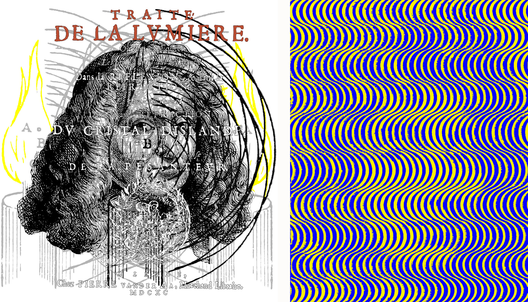Christiaan Huygens1629–1695
The wave nature of light, suggested by Grimaldi, was supported and extended by Huygens. He proposed and illustrated the wave fronts that could be produced by points on luminous sources (like candles), and he made an analogy between light and sound; diffraction was analyzed in terms of the wave fronts originating at the aperture. Huygens made analogies between mechanical events like projectiles bouncing from surfaces, and applied these to reflections and refractions of light. In contrast, Newton proposed that light consisted of small corpuscles which collided with one another. Thereafter, the theoretical contrast was between Huygens’s wave theory and Newton’s corpuscular theory of light. Huygens is portrayed twice. On the left, he is shown in his illustration of the waves that could emanate from a candle flame, taken from his book on light the title page of which is also presented. On the right, he can just be seen in an abstract pattern of waves; the colours (blue and yellow) correspond to those that he considered to be primaries. Huygens interacted by the leading figures of science in his day and added to the range of instruments that they could apply. These included the pendulum clock and the first version of the magic lantern.
